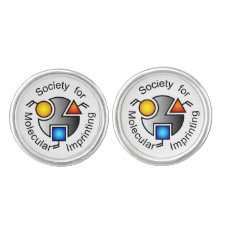
Authors: Truta LAAN, Sales MGF
Article Title: Carcinoembryonic antigen imprinting by electropolymerization on a common conductive glass support and its determination in serum samples.
Publication date: 2019
Journal: Sensors and Actuators B: Chemical
Volume: 287
Page numbers: 53-63.
DOI: 10.1016/j.snb.2019.02.033
Alternative URL: https://www.sciencedirect.com/science/article/pii/S0925400519302448
Abstract: This work reports a novel approach to monitor Carcinoembryonic antigen (CEA) biomarker with molecular-imprinting technology assembled on a conductive glass surface. For this purpose, the polymerization was achieved by electrical stimulus on fluorine doped tin oxide (FTO)-glass modified with a homemade carbon ink (hCCI). The biomimetic material was assembled on top of this surface, by moulding CEA at the molecular level around a polyaminophenol (PAP) polymeric matrix. The CEA biomarker was previously incubated in the presence or not of aminophenylboronic acid (APBA), to evaluate the effect of negative charges at the rebinding site. Then, aminophenol (AP) monomer was electropolymerized on the modified FTO glass, acting as working electrode. The template was removed by enzymatic action. Likewise, a control material having only PAP and no CEA was also prepared. The resulting sensing films were evaluated by electrochemical impedance spectroscopy (EIS) and cyclic voltammetry (CV), and the chemical modifications on these after each stage of the assembly process was followed by Fourier Transform Infrared (FTIR) and Raman spectroscopies. Imprinted devices displayed good linear responses to CEA in EIS assays from 2.5 ng/mL to 1.5 μg/mL in phosphate buffer solution (PBS). A promising detection of CEA was, also, achieved in spiked foetal bovine serum (FBS) samples, with a limit of detection (LOD) of 3 ng/mL. Overall, the devices developed herein are promising tools for monitoring CEA in point-of-care (POC) applications, being able to detect lower concentrations than those in normal physiological levels. In addition, the biosensors offer low cost, high sensitivity and good selectivity, and may be used to couple to other reading devices
Template and target information: carcinoembryonic antigen, CEA
Author keywords: cancer biomarkers, Protein surface imprinting, Solid conductive support, biological samples



Join the Society for Molecular Imprinting

New items RSS feed
Sign-up for e-mail updates:
Choose between receiving an occasional newsletter or more frequent e-mail alerts.
Click here to go to the sign-up page.
Is your name elemental or peptidic? Enter your name and find out by clicking either of the buttons below!
Other products you may like:
 MIPdatabase
MIPdatabase









